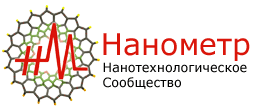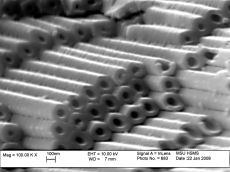Основные физиологические показатели: понимание сигналов, которые подаёт наш организм ( c 5 октября по 15 ноября 2015 г.)
Heart rate, blood pressure, respiration rate, temperature, pain. What do these vital signs tell you about your body? Learn the basic physiology underlying the vital signs and how to accurately assess them.
About the Course
The vital signs – heart rate, blood pressure, body temperature, respiration rate, and pain – communicate important information about the physiological status of the human body. In this six-week course we explore the anatomy and physiology underlying the vital signs so that you will develop a systematic, integrated understanding of how the body functions. Relevant body systems are reviewed including cardiovascular and respiratory, followed by explanations of how the function of these systems affects vital signs. We discuss normal ranges, normal variants, and the mechanisms that underlie changes in the objective measurement of vital signs. The course also includes demonstrations of appropriate techniques for measuring vital signs in yourself and others.
Course Syllabus
Week One: Overview and Heart Anatomy
1. Overview and introduction to course
2. Anatomy of the heart
3. Pulmonary and systemic circulation
4. Heart valves and the one-way flow of blood through the heart
5. The cardiac conduction system and electrocardiograms (ECGs)
6. Cardiac output, heart rate, and pulse
Week Two: Blood Pressure
1. Anatomy of blood vessels
2. Systolic versus diastolic pressure –what are they are and what they mean
3. Mean arterial pressure –what is it and how is it regulated?
4. What keeps blood circulating through the body
5. Measuring blood pressure
Week Three: Metabolism
1. Anabolism versus catabolism
2. Overview of energy pathways in the cells
3. How metabolism relates to the vital signs
4. Metabolic assessment demonstration
Week Four: Temperature
1. Temperature regulation
2. Mean temperature
3. Assessing body temperature
4. Hyperthermia, hypothermia and fever
Week Five: Respiratory Rate
1. Pulmonary anatomy and review of pulmonary circulation
2. Capillary gas exchange
3. Metabolism and respiratory regulation
4. Assessing respiration and lung sounds
Week Six: Pain and Conclusion
1. Basic neurologic and sensory anatomy
2. Pain tolerance and pain threshold
3. Assessing pain
4. Understanding what pain is telling us
5. Course wrap up
Recommended Background
The course is designed for a broad, general audience but may be particularly interesting for lay caregivers, those considering a career as a healthcare professional, individuals working in healthcare, those with an interest in personal health and fitness, or anyone who simply wants to understand how the body functions. A foundational background in biology and chemistry is beneficial but not required.
Suggested Readings
The course is designed to be self-contained without required readings other than the materials provided on the course page. Some students may want to purchase an anatomy and physiology textbook to supplement their learning. The following textbook is recommended but not required: Marieb, E. N. & Hoehn, K. (2012). Human Anatomy & Physiology (9th ed.). San Francisco, CA: Pearson Benjamin Cummings.
You can also access online, at no cost, a college-level Anatomy & Physiology text that you may find quite useful. Details about the textbook are available at openstaxcollege.org or by using this link: https://openstaxcollege.org/textbooks/anatomy-and-physiology/get
Course Format
The course consists of videos that: 1) describe the structure and function of relevant organ systems; 2) describe the physiological processes that produce the vital signs; and 3) demonstrate the correct techniques to assess vital signs. Some of the videos are lecture style while others are conversational. Each week consists of 8-10 videos, with each video typically lasting 8-12 minutes. Several quiz questions are incorporated into the weekly videos, allowing students to self-assess their learning of key concepts. There are also weekly stand-alone quizzes in which course content is contextualized into case study scenarios, allowing students to apply their knowledge to real life situations.
Students who complete course requirements will earn a Statement of Accomplishment. This course is also eligible for a Verified Certificate. You can start verifying your work for free and pay any time before the final week of the course. Coursera Financial Aid is also available for learners with limited economic means.
FAQ
What future endeavors will this course prepare me for?
- This course helps you understand the vital signs, thereby preparing you to be a more informed consumer of healthcare, whether for yourself or for a loved one. Individuals with potential interest in a healthcare career may also find this course particularly useful and informative, as may healthcare professionals wishing to refresh their understanding of basic anatomy and physiology.
- What is the coolest thing about this course?
This course is designed to make learning enjoyable: We use a variety of teaching modalities, feature conversations with content experts (in addition to the course faculty), and demonstrate vital sign assessment through the use of simulation technology. Best of all, taking this course means you will gain a better understanding of how your body works and what your vital signs mean.
For more information on Penn’s Open Learning initiative, please go to: http://openlearning.upenn.edu


